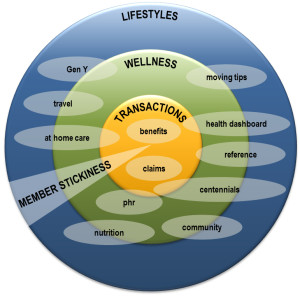Describe healthcare from a personal view. Do terms such as fragmented, fractured experience, inconsistent communications, confusing, irrelevant information, and frustrating come to mind? Is healthcare a personal experience?
Questions arise from a consumer. “Don’t they know me yet? Why do I have to repeat entering the same information? What does this mean? Which one is right?”
Consumers place so much emphasis and energy on how to navigate through healthcare to the point that they hardly have time to focus on their health. Did you ever walk into a store and were overwhelmed by what you saw you forgot why you came in the first place? If health care were a collection of packaged goods in a store, we would walk out of the store.
What do consumers want from healthcare? Five basic words come to mind: Easy, consistent, coordinated, helpful, and connected. And if information and tools are required to make good decisions, they need to be relevant, useful, and personalized to me.
To address the consumer’s needs, we need four elegant solution engines and they form a consumer equation.
Consumer Insight + Customer Experience + Personalized Communications + Relevant Health Engagement
It is more than just adding four items; it is how those items are connected into an integrated consumer view of healthcare – the conduits and glue in healthcare. So, let’s choose one of the four and work our way through them. Why? It’s all about “me” in a consumer world and the “me’s” have choices in a b2c environment. Consumer centricity should drive the business for a payer as it does for CPG companies.


